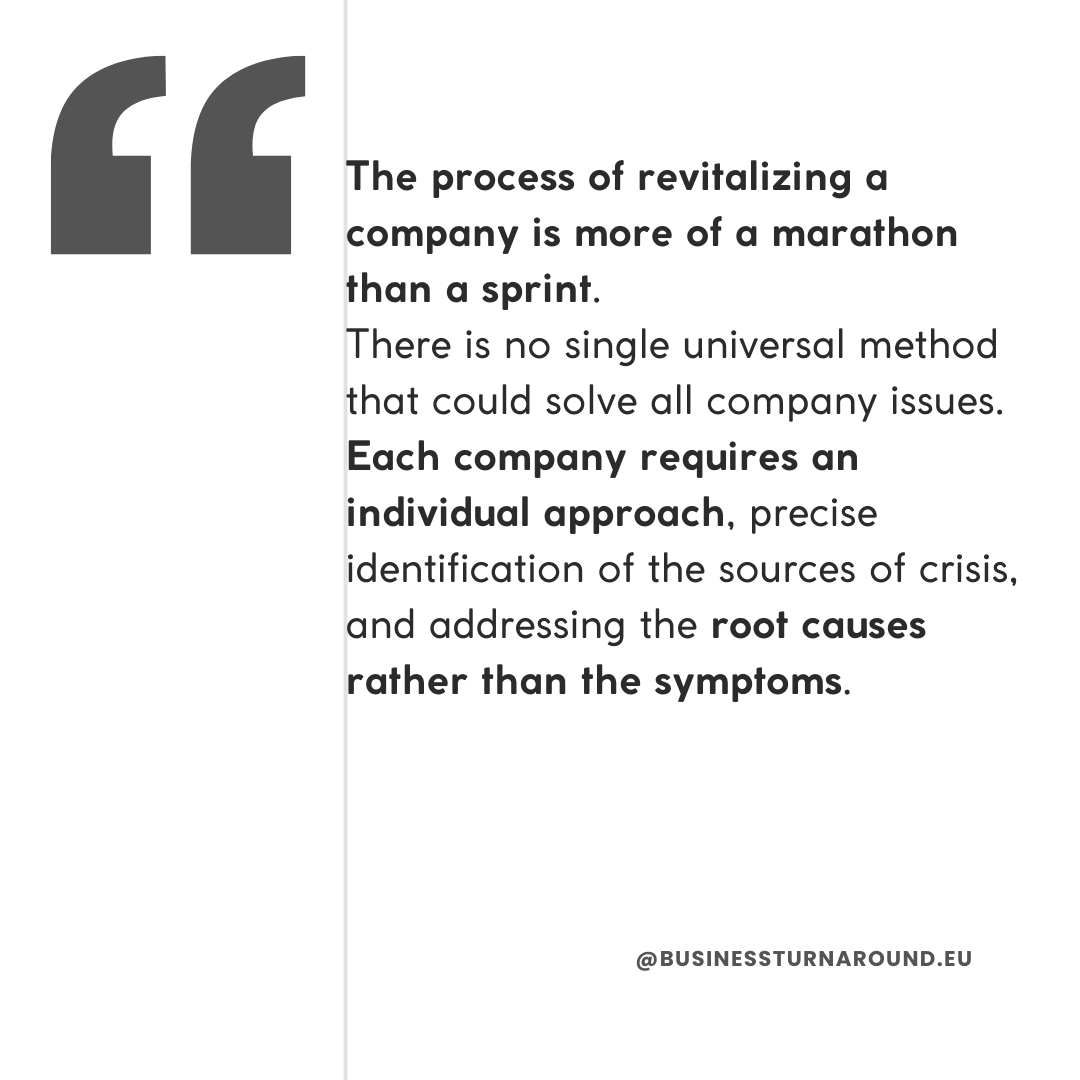Early warning system for crisis and strategic goals.
Early warning systems are designed to capture signals indicating impending difficulties within a company. It's important to choose strategic areas that will identify potential threats, as illustrated in the sample areas below (areas and signals):
Strategic Management Area: Lack of demand for products, decrease in investment expenditures
Operational Management Area: Excessive inventory, capital shortage, low labor productivity, poor people management, emergence of bottlenecks
Technology: Unrefined product, use of defective materials, employment of improper machinery
Costs: Increase in material costs, increase in manufacturing costs, rise in fixed costs, quality
Quality: Rising percentage of complaints, increased number of semi-finished product returns, increase in defect rate, customer complaints
Regardless of the form in which the goals are defined, there may be several reasons for not achieving them, and the mere existence of goals does not determine success. Below are some necessary issues in the process of implementing strategic goals.
A coherent system of goals - in the long term
How exactly would we like to develop? What potential do we have? A general definition of the assumptions in the above-mentioned matters is crucial for further work on the goals. It is this direction that determines specific, further actions and provides the opportunity to set goals "downwards" of the organization. The very existence of the organization's vision, without taking individual actions in this area, i.e. lack of operationalization of strategic goals, cascading them lower, and lack of understanding of all members of the organization, is often at risk of failure. Setting the direction of development in the long term is the starting point for activities at lower levels and it sets the direction for individual processes. This general vision determines the measurement systems, their expected values and the activities that will take place in individual regions of the organization. 
Decomposition of strategic goals / operationalization of strategic goals
The decomposition of goals is the next step to their implementation. Having a long-term vision, the next step should be to break it down into smaller goals, starting from the first year of implementation. The set goals do not constitute a specific action to be performed, often at the time of their decomposition, they should be translated into the language of specific actions, clear, understandable and unambiguous for their implementers. The translation of the overall vision and the definition of individual actions should be accompanied by a process of formal coordination of objectives through:
- defining specific and, above all, understandable, not excluding actions, activities to be carried out (what?)
- assigning implementers, participants, successors, challengers who will conduct and coordinate activities - often through various units in the organization (who?)
- what specific actions should be taken?, what specific solution tools will be used? How will we examine the progress of implementation and possible success - establishing a system of measures/target indicators (how?)
- when will individual actions be implemented, including indirect ones (when?)
Measures and expected values
We are talking about a top-down approach by creating a whole system of goals cascading below and setting adequate measures in the form of measures/indicators in relation to them. Cascading an annual target for individual months or units without the above is not always (paradoxically) according to the plan that the organization has set for itself in the long term, taking into account the natural development of the organization.
Cascading goals and responsibilities below
In most cases, understanding the goals and direction ends with top management. Although some activities are cascaded lower, this does not necessarily go hand in hand with understanding which direction we are going. Referring to the title of this entry and the aforementioned captain, passengers would also probably like to know which direction they are sailing. The misconception that all employees understand the direction is widespread, as is the lack of belief that everyone must know the direction. Cascading goals is therefore not only correct understanding, but also building involvement of organization members through their active participation in achieving goals. Solutions/tools implemented in the implementation process should take into account the widest possible active participation of employees.
A developed system for reacting to deviations and lack of progress
When we have a defined system of activities, time, responsibility, and the way of implementing the direction in which the organization is taking, the next step should be a cooperation plan between the implementers. In terms of this point, it is crucial to minimize the active attitude in favor of a proactive one. Tracking progress, reacting to deviations in the implementation of goals and indicative values should not be done occasionally. When everything goes according to plan, we don't have to improve or report anything, we react only when we have irregularities - this is the most common attitude that does not work. Developing a catchball system (top-down, etc.) that involves all levels of the organization, creating meeting schedules for individual levels so that the process of reporting the results takes place in a planned, cyclical and systematic way, regardless of whether it is good or not, is crucial. Building commitment and the catchball system in the process of achieving goals is the starting point for creating a preventive or corrective plan for deviations and lack of progress in assumptions.
Consistency and regularity
No matter how well we build the system, what tool we use, without consistency and regularity, we are not able to develop great effects. The tools used in the implementation of changes, regardless of their advancement and quality, are not the only success factor, which is unconditionally consistency and regularity.
© 2025 Anna Stusik-Kursa. All rights reserved.

